C/2013 X1 PANSTARRS
Closest to Sun on 20 April 2016 at 1.31AU
Closest to Earth on 21 June 2016 at 0.64AU
Maximum magnitude 6 in June 2016
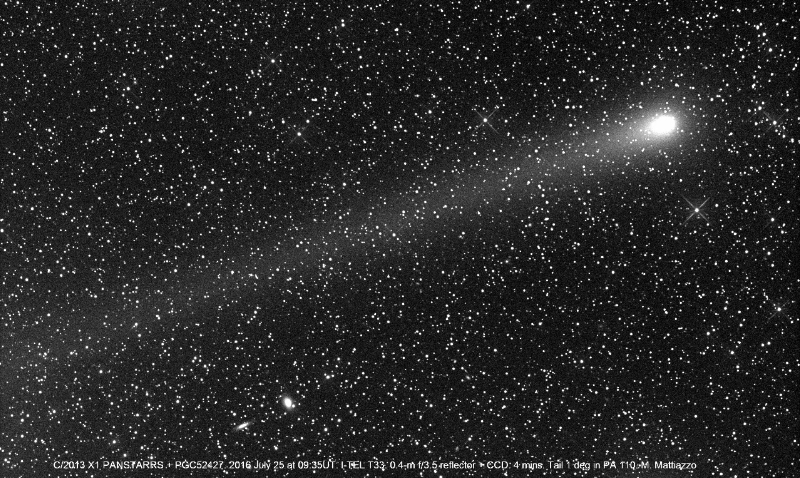
When comet C/2013 X1 was discovered in late 2013, it was predicted to reach magnitude 6 around the
time of closest approach to the Earth,
assuming an average brightening rate.
Around early January 2016, brightness
estimates had the comet around 9.5.
Then late on January 3 UT, it was seen to rise by 1.5 magnitudes in a
24hr period.
On January 5.46UT, I was estimating a magnitude of 8.0 and a 8' coma, through
25x100mm binoculars.
The morphology was indicative of a gaseous eruption, with a sharp increase in
coma size. A photographic ion tail developed shortly afterwards.
Coma estimates of 10'-12' put the actual size around the 800,000 to 1,000,000 km
diameter range, nearly as large as the Sun.
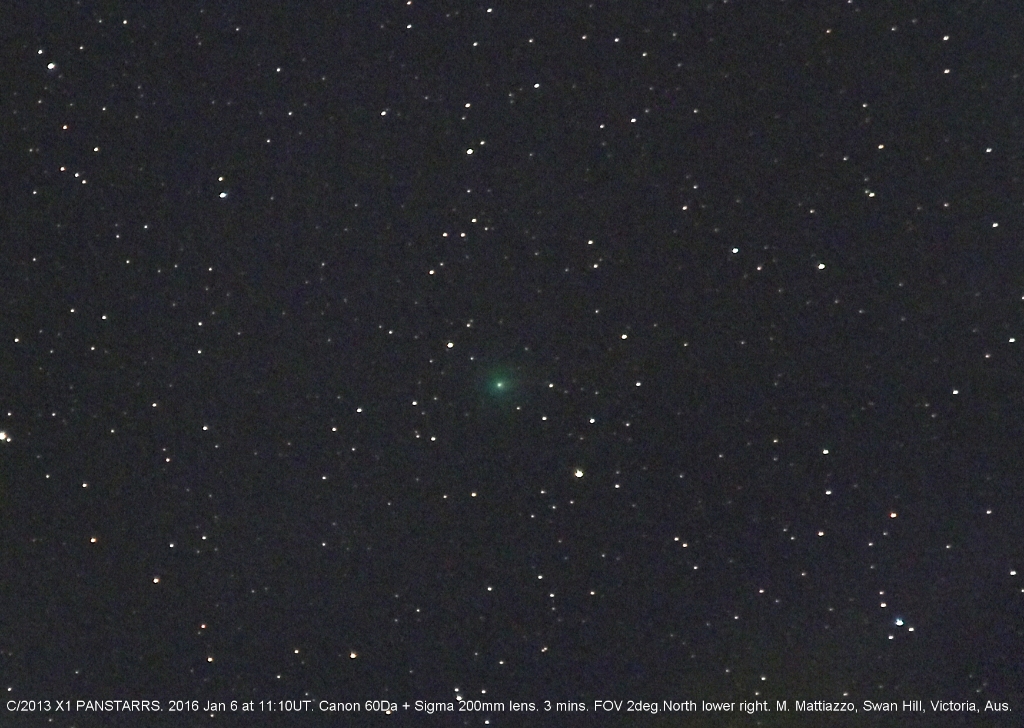

C/2013 X1 Outburst. courtesy Justin Tilbrook.
Pre image taken 2015 Dec 28 at 21:51UT.
Post image taken 2016 Jan 4 at 21:54 UT.
Note the morphology is indicative of a gaseous eruption, with a brightening
amplitude of >1 magnitude and a sharp increase in coma size.
Timing of the outburst appears to have occurred around January 3.
Below are visual observations taken via various observers published on the
internet.
Jan 3.07 UT:mag 9.7
Jan 3.13 UT:mag 9.4
Jan 3.71 UT mag 8.8
Jan 3.87 UT mag 8.5
Jan 4.30 UT mag 8.4
Jan 4.47 UT mag 8.2
Jan 5.11 UT mag 8.1
Jan 5.32 UT mag 8.0
The comet had the potential to peak at a magnitude 5.0 in
June 2016, as the comet
rapidly headed into evening skies,
crossing the constellations of Pisces
Austrinus, Microscopium, Telescopium and Ara.
During mid April 2016, the comet re-emerged from solar
conjunction into the morning sky, where it appeared moderately condensed at
magnitude 7.5.
By the morning of May 6, the comet had not brightened significantly, still
estimating mag 7.5, so hopes for a naked eye show were beginning to fade.
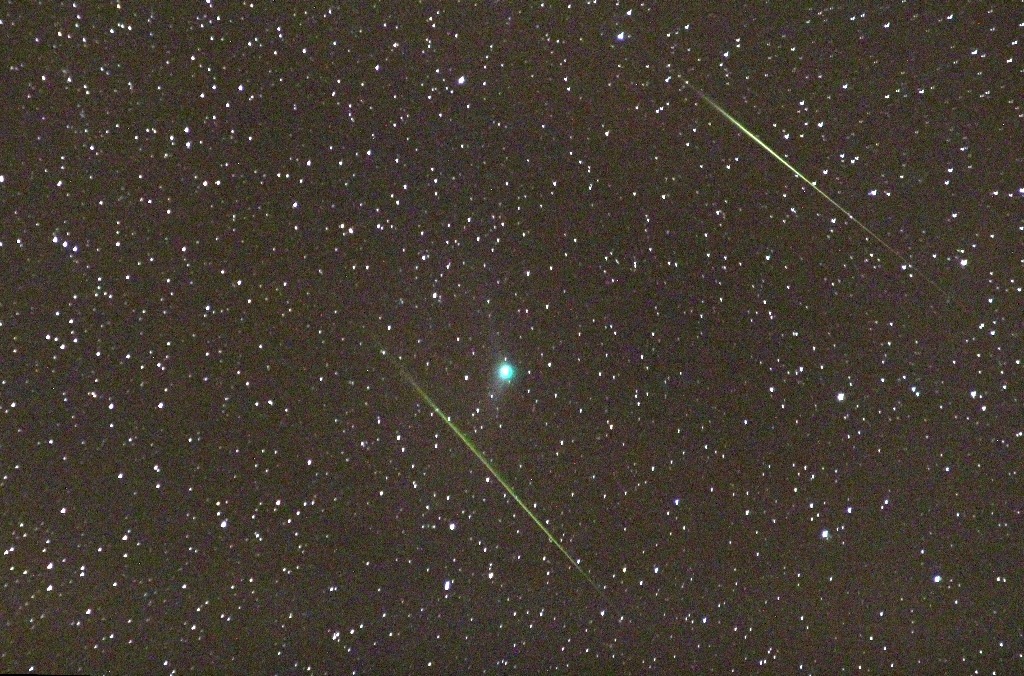
C/2013 X1 PANSTARRS and Eta Aquarid meteors.
Taken 2016 May 5 at 17:30UT. 1 minute combined exposure.
The expected peak magnitude was now revised down to 6.0 in mid June
2016, as it headed
rapidly into southern evening skies.
On 2016 June 1, the magnitude 6.5 comet was situated in Aquarius, rising before
midnight but better situated in the morning sky.
On the evening of June 4, the comet made a conjunction with the
Helix nebula.
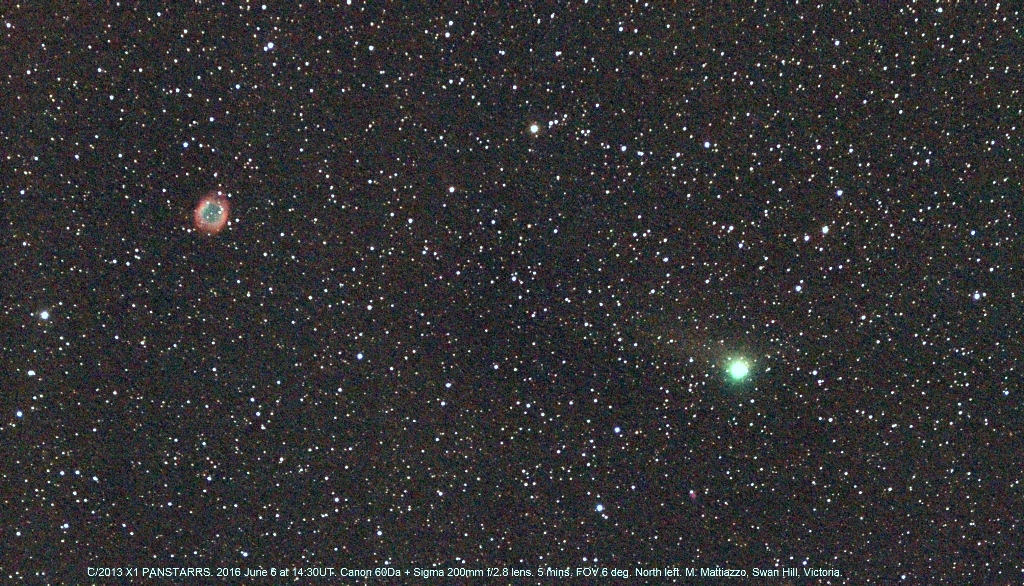
The comet moved into Pisces Austrinus on the 8th, Microscopium on the
14th,Telescopium on the 21st and Ara on the 27th.
The best moon free viewing occurred in the morning sky before dawn, between June 4-18, and in the evening sky after dusk, from June 22.
Unfortunately, a repeat outburst didn't eventuate, to make the comet visible to the naked eye.
On 2016 June 28, the comet was close to Globular Cluster NCG 6397 in Ara.
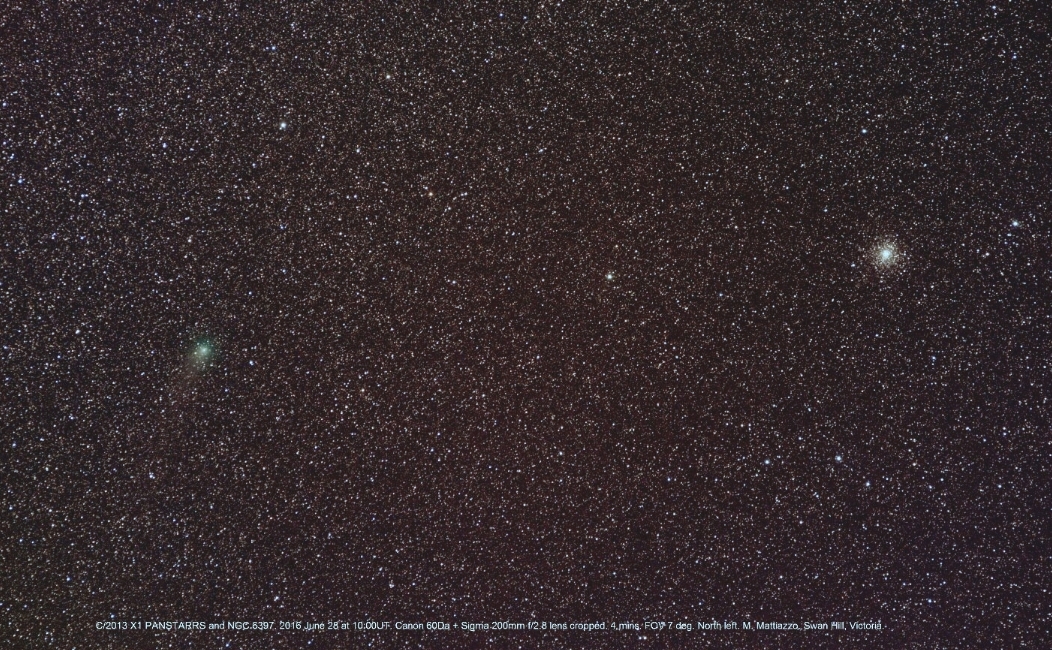
FINDER CHARTS
Night mode chart for April and May 2016 morning sky.

June 1 to 20 morning skies before dawn

from June 22 evening skies after dusk




July 2016 evening sky


August-September 2016 evening sky

















